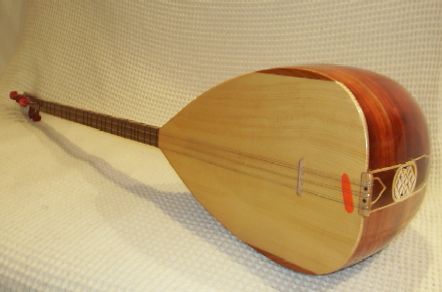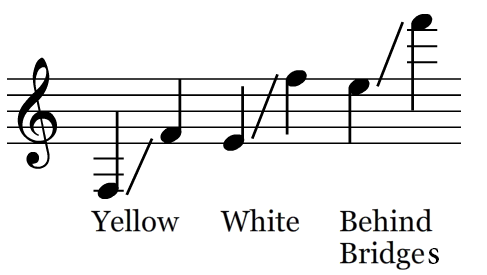|
Nuray Hafiftaş
Nuray Hafiftaş (8 August 1964 – 14 February 2018) is a Turkish folk music artist, musician, composer, lyricist, songwriters, bağlama virtuoso of folk, Arabesque, İlahi, Turkish classical music and Azerbaijani folk music. Early years Soon after her birth her family moved to Tophane, where Hafiftaş received her primary and secondary education at Tarlabaşı school. After that, she continued her higher education at the Istanbul University State Conservatory which is part of the Istanbul Technical University Turkish Music State Conservatory Career After graduation Nuray Hafiftaş continued her professional life as performer at the Istanbul University State Conservatory for four years. At the same time she signed a four-year contract with TRT Istanbul Radio to perform as a singer. Nuray Hafiftaş has released more than 13 vocal albums of Turkish folk music. Death Hafiftaş had been treated for large bowel cancer at Menzil, Kahta, Naqshbandi Sunni Islam group hospital o ... [...More Info...] [...Related Items...] OR: [Wikipedia] [Google] [Baidu] |
Eskibeyrehatun, Çıldır
Eskibeyrehatun is a village in the Çıldır District, Ardahan Province, Turkey Turkey ( tr, Türkiye ), officially the Republic of Türkiye ( tr, Türkiye Cumhuriyeti, links=no ), is a list of transcontinental countries, transcontinental country located mainly on the Anatolia, Anatolian Peninsula in Western Asia, with .... Its population is 453 (2021). References Villages in Çıldır District {{Ardahan-geo-stub ... [...More Info...] [...Related Items...] OR: [Wikipedia] [Google] [Baidu] |
Tanbur
The term ''Tanbur'' ( fa, تنبور, ) can refer to various long-necked string instruments originating in Mesopotamia, Southern or Central Asia. According to the ''New Grove Dictionary of Music and Musicians'', "terminology presents a complicated situation. Nowadays the term tanbur (or tambur) is applied to a variety of distinct and related long-necked lutes used in art and folk traditions. Similar or identical instruments are also known by other terms." These instruments are used in the traditional music of Iran, India, Kurdistan, Armenia, Afghanistan, Azerbaijan (especially Avar community), Pakistan, Turkey, Tajikistan, Kazakhstan, and Uzbekistan. Origins Tanburs have been present in Mesopotamia since the Akkadian era, or the third millennium BC. Three figurines have been found in Susa that belong to 1500 BC, and in hands of one of them is a tanbur-like instrument. Also an image on the rocks near Mosul that belong to about 1000 B shows tanbur players. Playing the tan ... [...More Info...] [...Related Items...] OR: [Wikipedia] [Google] [Baidu] |
Virtuoso
A virtuoso (from Italian ''virtuoso'' or , "virtuous", Late Latin ''virtuosus'', Latin ''virtus'', "virtue", "excellence" or "skill") is an individual who possesses outstanding talent and technical ability in a particular art or field such as fine arts, music, singing, playing a musical instrument, or composition. Meaning This word also refers to a person who has cultivated appreciation of artistic excellence, either as a connoisseur or collector. The plural form of ''virtuoso'' is either ''virtuosi'' or the Anglicisation ''virtuosos'', and the feminine forms are ''virtuosa'' and ''virtuose''. According to ''Music in the Western civilization'' by Piero Weiss and Richard Taruskin: ...a virtuoso was, originally, a highly accomplished musician, but by the nineteenth century the term had become restricted to performers, both vocal and instrumental, whose technical accomplishments were so pronounced as to dazzle the public. The defining element of virtuosity is the performance ab ... [...More Info...] [...Related Items...] OR: [Wikipedia] [Google] [Baidu] |
Bağlama
The ''bağlama'' or ''saz'' is a family of plucked string instruments, long-necked lutes used in Ottoman classical music, Turkish folk music, Turkish Arabesque music, Azerbaijani music, Kurdish music, Armenian music and in parts of Syria, Iraq and the Balkan countries. ''Bağlama'' ( tr, bağlama) is Turkish from ''bağlamak'', "to tie". It is . ''Saz'' ( fa, ساز) means "to make; to compose" in Persian. It is . According to ''The New Grove Dictionary of Music and Musicians'', "the terms 'bağlama' and 'saz' are used somewhat interchangeably in Turkey." Like the Western lute and the Middle-Eastern oud, it has a deep round back, but a much longer neck. It can be played with a plectrum or with a fingerpicking style known as ''şelpe''. In the music of Greece the name ''baglamas'' ( el, μπαγλαμάς) is given to a treble bouzouki, a related instrument. The Turkish settlement of Anatolia from the late eleventh century onward saw the introduction of a two-string Turkmen ... [...More Info...] [...Related Items...] OR: [Wikipedia] [Google] [Baidu] |
Ashik
An ashik ( az, aşıq, ; tr, âşık; fa, عاشیق) or ashugh ( hy, աշուղ; ka, აშუღი) is traditionally a singer-poet and bard who accompanies his song—be it a dastan (traditional epic story, also known as '' hikaye'') or a shorter original composition—with a long-necked lute (usually a bağlama or ''saz'') in Turkic (primarily Turkish and Azerbaijani cultures, including Iranian Azerbaijanis) and non-Turkic cultures of South Caucasus (primarily Armenian and Georgian). In Azerbaijan, the modern ashik is a professional musician who usually serves an apprenticeship, masters playing the bağlama, and builds up a varied but individual repertoire of Turkic folk songs.Colin P. Mitchell (Editor), New Perspectives on Safavid Iran: Empire and Society, 2011, Routledge, 90–92 The word ''ashiq'' ( ar, عاشق, meaning "in love" or "lovelorn") is the nominative form of a noun derived from the word ''ishq'' ( ar, عشق, "love"), which in turn may b ... [...More Info...] [...Related Items...] OR: [Wikipedia] [Google] [Baidu] |
Cura Nagara
The Cura nagara (small nagara) is a folk drum used in the traditional music of Azerbaijan Azerbaijan (, ; az, Azərbaycan ), officially the Republic of Azerbaijan, , also sometimes officially called the Azerbaijan Republic is a transcontinental country located at the boundary of Eastern Europe and Western Asia. It is a part of th .... Since it is smaller than the main nagara, it is called "cura" nagara. The diameter of its body is 300–320 mm, and its height is 340–360 mm. References Drums Asian percussion instruments Turkish musical instruments Azerbaijani music Azerbaijani musical instruments {{Membranophone-instrument-stub ... [...More Info...] [...Related Items...] OR: [Wikipedia] [Google] [Baidu] |
Tar (Azerbaijani Instrument)
The Azerbaijani tar and the skills related to this tradition play a significant role in shaping the cultural identity of Azerbaijanis. The tar is a long-necked, plucked lute, traditionally crafted, and performed in communities throughout the Republic of Azerbaijan. The tar is featured alone or with other instruments in numerous traditional musical styles. It is also considered by many to be the country's leading musical instrument. In 2012, the craftsmanship and performance art of the tar was added to the UNESCO's Intangible Cultural Heritage List. Craftsmanship Tar makers transmit their skills to apprentices, often within the family. Craftsmanship begins with careful selection of materials for the instrument: mulberry wood for the body, nut wood for the neck, and pear wood for the tuning pegs. Using various tools, crafters create a hollow body in the form of a figure eight, which is then covered with the thin pericardium of an ox. The fretted neck is affixed, metal strings a ... [...More Info...] [...Related Items...] OR: [Wikipedia] [Google] [Baidu] |
Garmon
The garmon ( rus, гармо́нь, p=gɐˈrmonʲ, links=yes, from rus, гармо́ника, p=gɐˈrmonʲɪkə, r=garmonika, cognate of English ''harmonica''), commonly called garmoshka, is a kind of Russian button accordion, a free-reed wind instrument. A garmon has two rows of buttons on the right side, which play the notes of a diatonic scale, and at least two rows of buttons on the left side, which play the primary chords in the key of the instrument as well as its relative harmonic minor key. Many instruments have additional right-hand buttons with useful accidental notes, additional left-hand chords for playing in related keys, and a row of free-bass buttons, to facilitate playing of bass melodies. The term "Garmon" means overcomer, winner or "noble" believed epistemologically to derive from the term for "blue" which nobility wore. It is believed perhaps Russian aristocratic, tzars and or royal leadership had garmons played in their courts. The garmons can be of ... [...More Info...] [...Related Items...] OR: [Wikipedia] [Google] [Baidu] |
Komuz
The komuz or qomuz ( ky, комуз , az, Qopuz, tr, Kopuz) is an ancient fretless string instrument used in Central Asian music, related to certain other Turkic string instruments, the Mongolian tovshuur, and the lute. The instrument can be found in Turkic ethnic groups, from China to Turkey. Forms of this instrument are used in China by the Naxi people and are called Huobusi, Hebisi , and Hunbusi. It is the best-known national instrument and one of the better-known Kyrgyz national symbols. The komuz is generally made from a single piece of wood (usually apricot or juniper) and has three strings traditionally made out of gut, and often from fishing line in modern times. In the most common tunings the middle string is the highest in pitch. Virtuosos frequently play the komuz in a variety of different positions; over the shoulder, between the knees and upside down. An illustration of a komuz is featured on the reverse of the one-som note. Playing style The komuz can be use ... [...More Info...] [...Related Items...] OR: [Wikipedia] [Google] [Baidu] |
Balaban (instrument)
Balaban, or balaman ( az, Balaban – بالابان; fa, بالابان) is cylindrical-bore, double-reed wind instrument about long with eight finger holes and one thumb hole. This instrument is played in the eastern part of Iran's historic Azerbaijan region as well as in the Republic of Azerbaijan (where it is also called '' Düdük'' according to the ''Encyclopædia Iranica''). Balaban, Mey, and Duduk are almost identical, except for historical and geographical differences. Balaban can be made of mulberry or other harder woods, such as walnut. The bore through the instrument is about in diameter. The double reed is made out of a single tube of cane about six cm long and pressed flat at one end. The performer uses air stored in his cheeks to keep playing the balaban while he inhales air into his lungs. This “circular” breathing technique is commonly used with all the double-reed instruments in the Middle East. Balaban can be found in regions of the Republic of A ... [...More Info...] [...Related Items...] OR: [Wikipedia] [Google] [Baidu] |
Santur
The santur (also ''santūr'', ''santour'', ''santoor'') ( fa, سنتور), is a hammered dulcimer of Iranian origins.--- Rashid, Subhi Anwar (1989). ''Al-ʼĀlāt al-musīqīyya al-muṣāhiba lil-Maqām al-ʻIrāqī''. Baghdad: Matbaʻat al-ʻUmmāl al-Markazīyya. History The santur was invented and developed in the area of Iran and Mesopotamia. "The earliest sign of it comes from Assyrian and Babylonian stone carvings (669 B.C.); it shows the instrument being played while hanging from the player's neck" (35). This instrument was traded and traveled to different parts of the Middle East. Each country customized and designed its own versions to adapt to their musical scales and tunings. The original santur was made with wood and stones and strung with goat intestines. The Mesopotamian santur has been claimed to be the father of the harp, the Chinese yangqin, the harpsichord, the qanun, the cimbalom, and the American and European hammered dulcimers. Name The name 'santur' co ... [...More Info...] [...Related Items...] OR: [Wikipedia] [Google] [Baidu] |
Nagara (drum)
The ''nagara'' or ''naghara'' is a drum used in the Middle East. There are several types of naghara, which is considered to be the lead instrument in folk ceremonies and weddings. The naghara differs in size and goes by various names such as "boyuk nagara" (big naghara), "cura nagara" (small naghara), "chiling naghara" (played with drum sticks), "Qoltuq nagara" (drum held under the arm), gosha naghara (Naqareh) and "el naghara" (hand naghara). Nagada (Indian Drum) is a percussion instrument used for its rhythmic sounds.. Nakara is a festival instrument mostly used in South Indian Hindu temples. The size may vary and this instrument may be kept near the entrance of the South Indian Hindu temples. Temple musical instrument Nagada is played even now in chosen Hindu temples in Tamil Nadu. The temple musical instruments are termed as Kethu or jalliry or jalli instruments (Tamil Language: கெத்து வாத்தியம், "ஜல்லிரி', "ஜல்லி'). ... [...More Info...] [...Related Items...] OR: [Wikipedia] [Google] [Baidu] |




_b.jpg)


